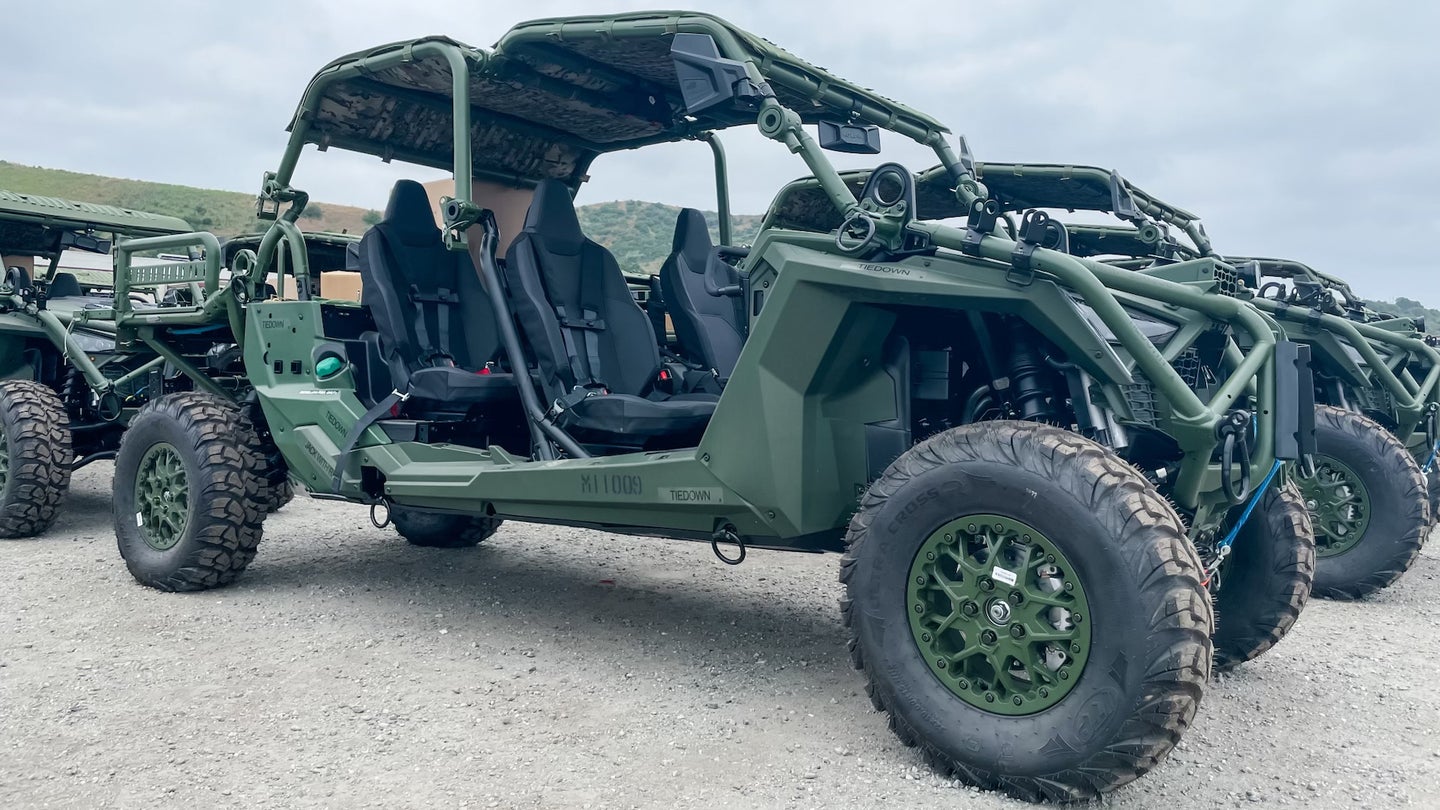Here comes the Marine Corps’ new ultra-light tactical dune buggy
Buckle up.

The Marine Corps has started fielding its new Ultra Light Tactical Vehicle (ULTV) to the fleet as part of its modernization push ahead of a future conflict in the Indo-Pacific, the service announced on Wednesday.
A replacement for the Polaris MRZR all-terrain tactical vehicle first fielded to infantry and recon Marines back in 2017, the Corps envisions the two-person ULTV as an “advanced, lightweight solution” to provide troops with enhanced mobility and sustainability in denied environments, according to an announcement from Marine Corps Systems Command.
Like its Army cousin, the Infantry Squad Vehicle, the ULTV doesn’t feature extensive ballistic armor for survivability. Instead, the vehicle will rely on its smaller size and speed to evade enemy threats, according to Marine Corps officials
“This is not an assault vehicle,” Program Manager for Light Tactical Vehicles Jennifer Moore told National Defense magazine ahead of the service’s release of a ULTV request for proposals in February 2019. “It is to lighten the load of the warfighter and then also to provide [casualty evacuation] support.”
The souped-up dune buggy fits on both the MV-22 Osprey tiltrotor aircraft and CH-53E/K King Stallion heavy lift helicopter. The ULTV can support infantry needs “ranging from logistical support and casualty evacuation to command and control and electronic warfare missions,” according to the MARCORSYSCOM.
Subscribe to Task & Purpose Today. Get the latest military news and culture in your inbox daily.
The ULTV fielding comes amid a major reorganization of the Corps aimed at becoming more agile for a protracted conflict in the Indo-Pacific region envisioned in the service’s Force Design 2030 modernization roadmap, a pivot that requires smaller and lighter wheeled tactical vehicles, as Corps officials have stated in the past.
Fielding the ULTV “serves as a signal that the Corps is keeping in stride with the ambitious roadmap laid out in Force Design 2030,” said Col. John Gutierrez, portfolio manager for Logistics Combat Element Systems, in a statement. “This new capability will ultimately help forge a more agile and resilient Corps—one which is empowered to overcome the evolving complexities of modern warfare.”
According to MARCORSYSCOM, the First Marine Expeditionary Forces’ 1st Battalion, 5th Marines at Camp Pendleton in California have already received an initial tranche of ULTVs.
The Marine Corps’ fiscal year 2024 budget request calls for the procurement of 124 ULTVs at roughly $80,000 apiece, bringing the size of the service’s fleet to roughly 420 following earlier vehicle buys in fiscal years 2022 and 2023. The service’s unfunded priorities list also contains an additional $6 million for additional ULTVs.
“The ULTV is more than just a tactical vehicle; it enhances our capabilities across the board, ensuring the success of our mission and the safety of our Marines,” said Moore, the program manager, in the Wednesday statement. “The ability to rapidly configure the ULTV to suit diverse mission needs — from logistical support to electronic warfare — enhances our capabilities in previously unimagined ways.”
The latest on Task & Purpose
- Air Force said AI drone killed its human operator in a simulation
- The Army says it’s made ‘significant improvements’ to its troubled new infantry squad vehicle
- What we know about China’s hacking of Navy systems
- Taliban moving captured US military vehicles and Soviet tanks to Iranian border
- Five juveniles arrested for attack on Marines caught on video
